Surfing in the Alps, skiing in the desert, and mountain biking without rocks, roots, or mountains: Is it inevitable for extreme sports to adopt an artificial approach when they hit the mainstream in order to ramp up the fun factor? An article on the challenges and opportunities ahead for the bike scene, and a look at what we can learn from winter and water sports.
When Andreas Toepfer, co-founder of legendary snowboard magazine Pleasure got in touch asking if we were interested in a story about Wavegarden’s new wave pool in Crans-Montana, our editorial office had mixed feelings. Sure, riding, surfing, snowboarding – they’re quite closely related, usually done by a similar bunch of people, but it didn’t feel like it was properly ENDURO. But then we had second thoughts and we couldn’t turn Andreas down. Something is happening right now, and we aren’t just talking bikes; the whole outdoor scene is changing.
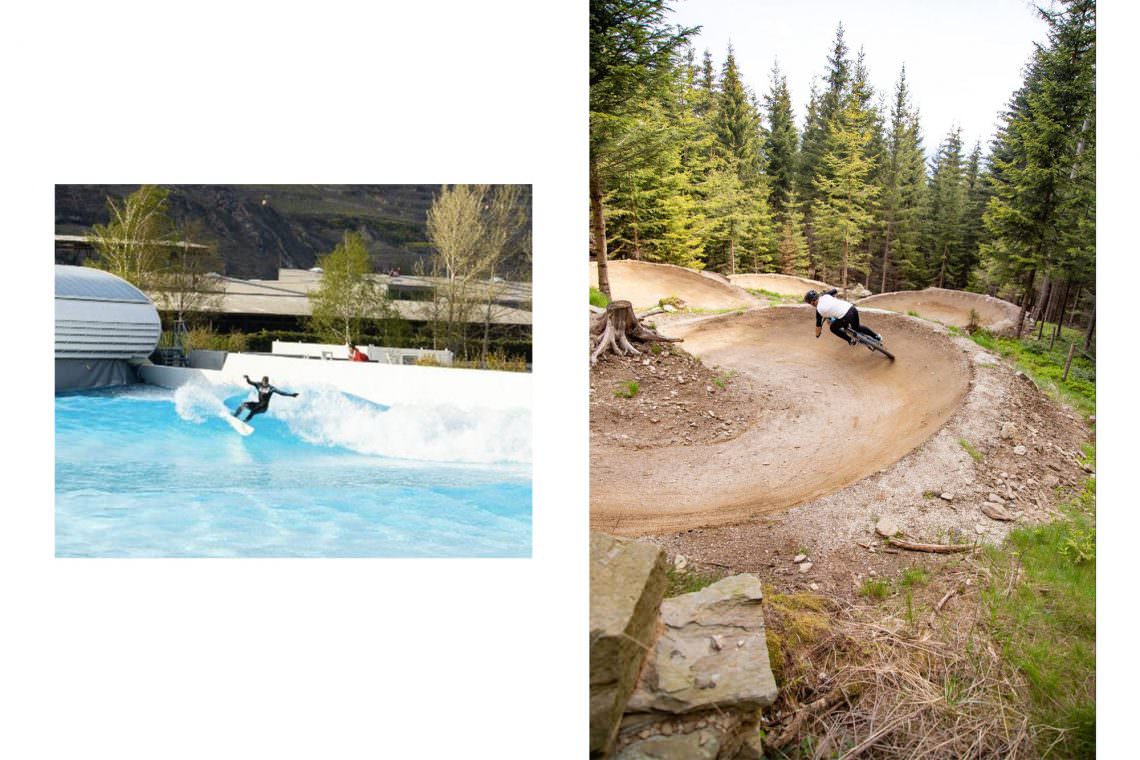
Photo: Andreas Toepfer, Andreas Putz
What spurred on our change of heart? It’s obvious once you start thinking about it: extreme sports are not what they once were. It’s going man-made, risks are being curtailed, and it’s opening up to the masses; it’s the commercialization of extreme sports. You build indoor ski halls, flow trails, and wave pools so that the adrenaline and satisfaction for the athletes is no longer dependent on nature, its unpredictability, and its moods. Sounds pretty good, right? Sure, but it comes with a price. Such developments can prompt purists of whatever sport to feel insulted, not exactly keen to lay out a red carpet for imposters in what they’d previously considered their sport, done on their terrain—in nature.


Status quo – How much mountain does mountain biking need?
Human history has always seen us shift the boundaries of what is possible. Instead of accepting things, humans have tinkered with it until natural boundaries could be overcome and solutions could be found—this applies to all areas of life, including sports. Let’s make skiing more comfortable and suitable for the masses by installing lifts (now with heated seats!) and purpose-build mountain lakes to aid artificial snow-making on the slopes. Mountains have, quite literally, been moved for our pleasure. The pinnacle of such creations is surely the indoor ski hall in Dubai’s Mall of the Emirates: 40°C outdoor, but ideal skiing indoors.
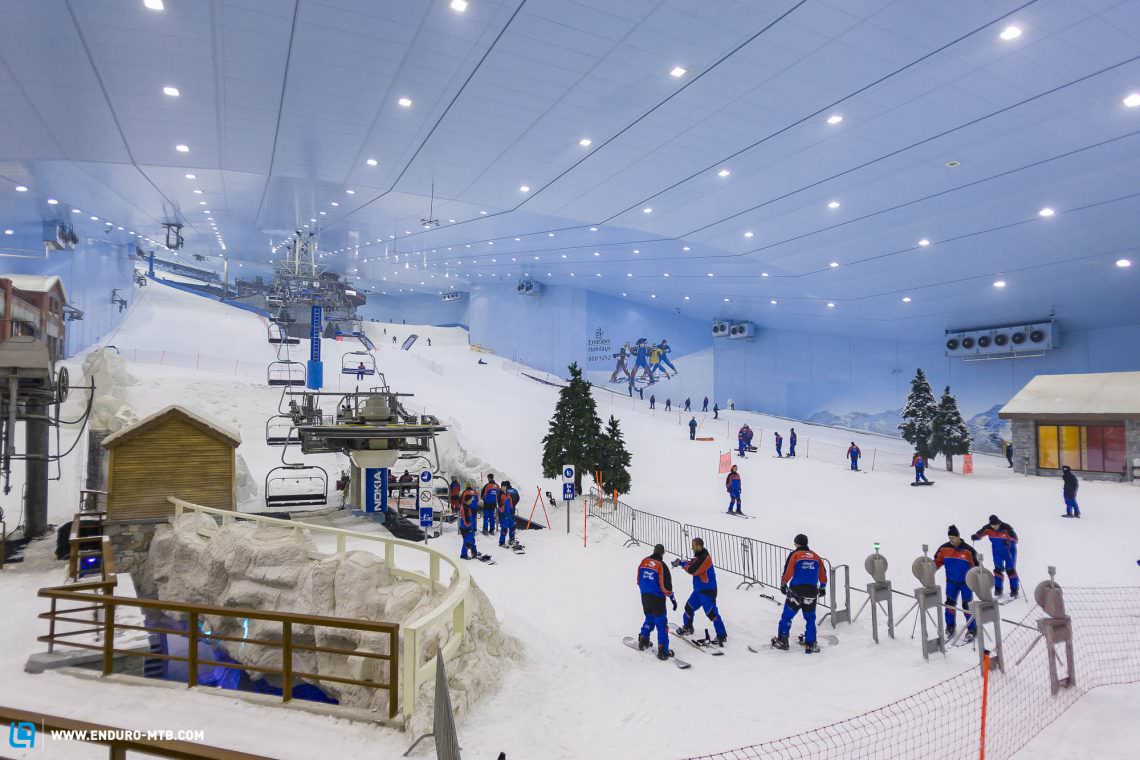
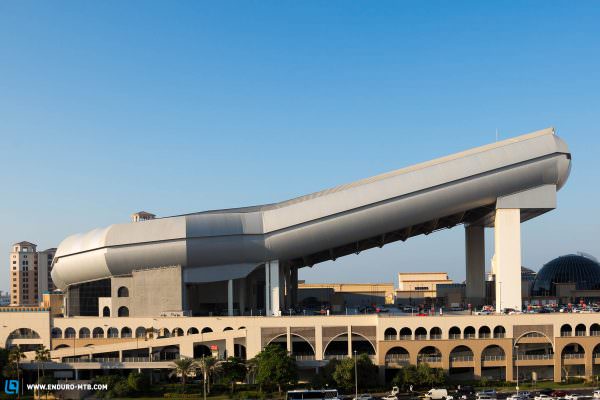

While not as extreme as snow in the desert, mountain biking has undergone some similar changes: over the past 30 years, steel hardtails have evolved into highly advanced carbon fullies with wireless shifting, dropper posts, fit for use across an eye-poppingly expansive range of applications. Whereas 20 years ago, a ride on some bridal paths in the countryside was the highlight of your weekend, these days you can get perfect trails and lifts – even in some of the most forgotten towns.
It doesn’t end there: now you’ve got eMTBs once good enough for your granny but now veritable trail rockets, taming the mountains with their potency. Back in 2013 when we launched E-MOUNTAINBIKE Magazine, we discussed whether eMTBing would become the next skiing—and that is exactly where we are today. Riding bikes won’t follow the exact same route as skiing but there are numerous exciting parallels of things that we can not only learn but can put to our advantage and build upon.
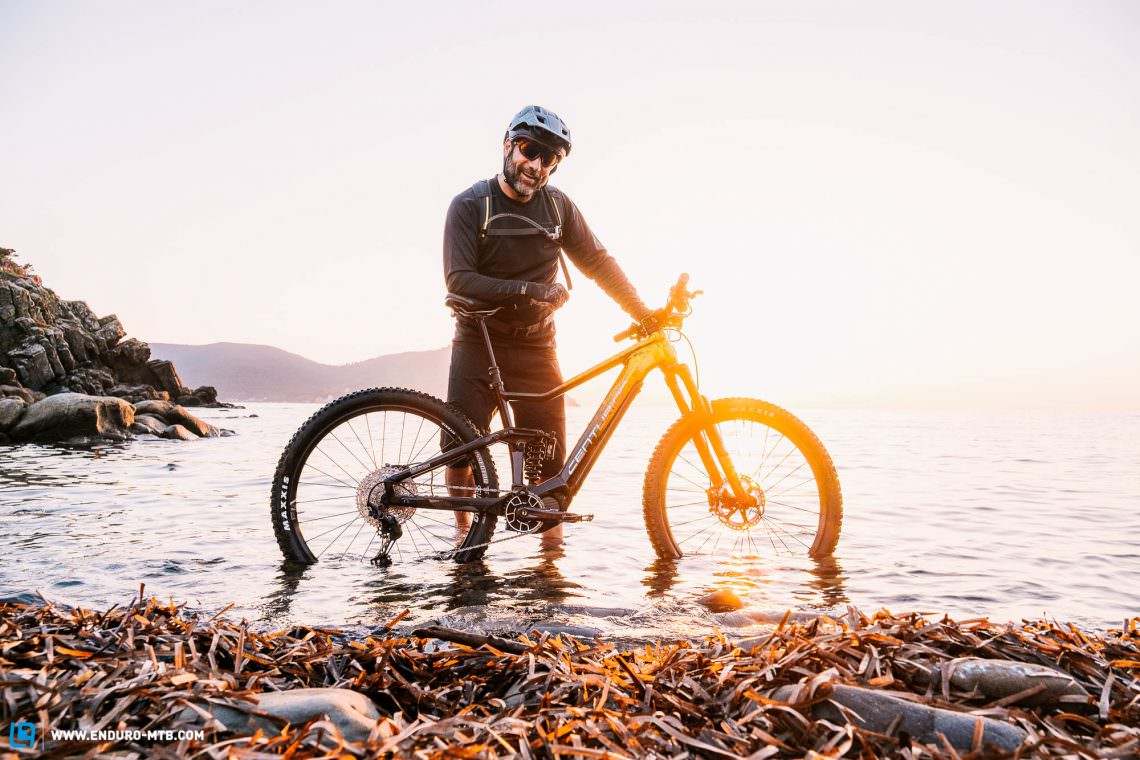
Wave pools or the sea? How much are we willing to pay?
Wavegarden, the creators behind Alaïa Bay in Switzerland, promise up to 1,000 quality waves per hour for all levels of surfers, up to 20 different wave styles and heights between 0.5 metres and 2 metres tall. The Alaïa Bay surfing lagoon has just opened in summer 2021 in the hearts of the Valais Alps—the fourth of its kind, and the first in continental Europe after recent openings in the UK, Australia and South Korea. An artificial lagoon, it can host up to 80 surfers at any one time in a safe and controlled environment. No sharks, no eye-burning salt water, no agg-y locals. For experts looking to hone their skills or newbies starting from scratch, the pool’s uniform and customizable nature means that progress will be much more forthcoming than when you’re subjected to the ebbs and flows of the sea. And having fun? That’s basically a given but you’ve got to be able to afford it; it’s a big chunk of change—expect to pay over 100 Swiss Francs for an hour—but it has many perks. Waves are guaranteed, you don’t have to take a full-on surf trip, and we’re not all hardcore enough for Nazaré. This surfing lagoon isn’t just opening up the sport to the current 40,000 surfers who reside in Switzerland, but to everyone, even those who’ve never tried it, but fancy surfing in a landlocked country. A lot of surfers are a bit critical of the welcome-all approach, as we’ve heard from an Australian surf coach. Curious to hear that a well-travelled surfer dude would perceive artificial waves as a danger to line-ups we’d otherwise see in the ocean…
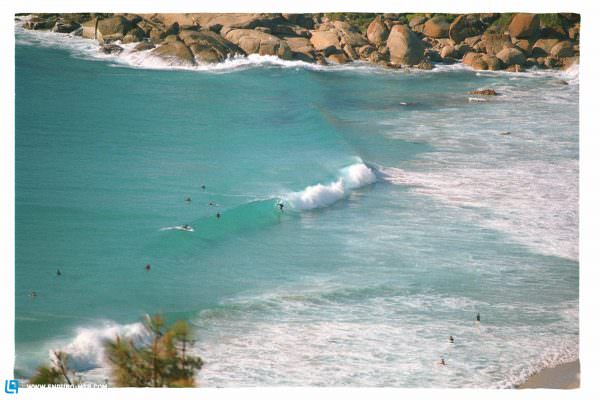
Photo: Andreas Toepfer

Photo: Wavegarden Alaïa Bay
There’s a similar movement in the bike world too: a new generation of trails that minimize risk and adventure and instead ramp up accessibility and offer fun for all abilities. From the rise of more all-inclusive tourism and adventure concepts—like Switzerland’s rocksresort in Laax and the Bike Republic in Sölden—you realise that margins and success are certainly on the agenda for businesses and clearly a market exists for a sort of pre-programmed adventure, featuring pump tracks, and even cafes and restaurants as part of the package.
Quo vadis, extreme mass sports?
Resorts and all-inclusive tourism definitely present advantages for families, taking away the unpredictability of planning and trial-and-error trail hunting. Even if some people thrive on the challenge of using body parts to order meals for picky children in an Italian mountain village, that hassle can now be taken care of. It all comes down to personal choice; what do you want from the trip or the adventure? In recent years there’s been a seismic shift in our expectations, and Andi—who checked out Alaïa Bay ahead of its official opening on commission for ENDURO and Pleasure Magazine—knows this only too well:
“According to the most recent ENDURO survey, I’m as average as they come: Not old, not young, German-speaking with a trail bike in the garage. My kids, however, see me differently: to them, I’m extreme. But the only thing that’s potentially extreme about me is my vintage snowboard collection. Turn on your TV, or even better, log onto social media along with 4.3 billion other users and you’ll realise that former extreme or niche sports don’t have all that much going on.
I’ve avidly followed mountain biking, snowboarding and surfing for years. When I started riding there were no cleats, droppers, or forks. No superpipes, triple corks, or air bags. No wave pools, surf camps, or tow-ins. You had to hustle for two summers long to afford a no-sus MTB with one of the earliest XT drivetrains. Without a driving license or the internet, you simply rode out from your house. You pushed the limits of what was possible through trying and trying again. A how-to of jumping on YouTube didn’t exist. The highlight of your weekend? Bombing down a local gravel descent and setting a new top speed. Perks like bike parks, pump tracks, manmade flow trails and shuttles didn’t exist, but on the flipside, my bike had 21 gears!
Mountain biking, snowboarding and surfing are now Olympic sports. Even skateboarding—surely less of a sport and more of a lifestyle—isn’t immune to the commercialization and has been swept up by the Olympic rings. If my sport is now so mainstream, what does it say about me? Am I still authentic?“

Photo: Andreas Toepfer

Photo: Matt Georges
(E-)Mountain biking = Mainstream
731,000 eMTBs and muscle-powered mountain bikes were sold in Germany alone in 2020. Ergo, don’t be surprised to see more bikes outside and a higher concentration of riders on mellow trails, at tourist board-touted hotspots, and most definitely at ’gram-worthy viewpoints. In the past two years, mountain biking has hit the mainstream with force—if you’re looking for the most on-trend sport, here we are. A not insignificant portion of the popularity is courtesy of eMTBs, which have rendered the world of mountain biking accessible to the masses. It’s a sport that gives you the sense of being superhuman—without having to break into too much of a sweat. You see it regularly; that familiar e-bike-induced grin as people harness their own power and discover unforeseen possibilities: for some it’s the substitute for the chair lift, a training tool, your own personal shuttle for bike park rats, and for others they replace the car, become the daily commute, or cart the whole family around town. The palette of possible applications is massive, which makes it, quite simply, well suited to the masses.
An extreme sport that becomes a mass sport, a leisure pastime or even a lifestyle in which the act of riding can take second place — is that where we are? For many people, bikes take them into the outdoors with friends and family; still considered a tool, but in this case markedly less focused on the ability to unlock adventures as it is for the MTB core. For ‘Best Agers’, ‘young seniors’ or the 49-plus category, eMTBs hand them back a sense of freedom, or a new lease of life as corny as it sounds. For Gen-Z—those born after 1996—fitness is not the priority; their eMTB is of pragmatic benefit, meaning more runs, more airtime, more shredding. With so much adrenaline pumping and almost immediate access to the trails, concerns about Tiktok, playstation and the sofa are out the window. Even in Stuttgart, the home of the automobile industry, eMTBs are becoming a status symbol that’s adopted by youth culture as demonstrated by the first urban eMTB gang.

The revolution is eating its own; there’s no way back. Skiing knows this too well, where huge ski resorts are the norm and ski tourers are the exception. The trend towards domestication of extreme sports to appeal to the masses is undeniable: new formats, new offerings, all blissfully accessible and right on your doorstep. The same for bikes: danger and exertion levels are reduced by a carefully planned, secured, watered-down version of trail riding. The target market is broader by the day—all genders, all ages. To meet the increased demand, ‘play parks’ are cropping up with skills zones, pump tracks and flow trails. Precisely what pioneers of extreme sports would never have thought possible is now the reality: parks on every corner, foam pits, wave pools, illuminations, and lift access for all of us, whenever we want it.
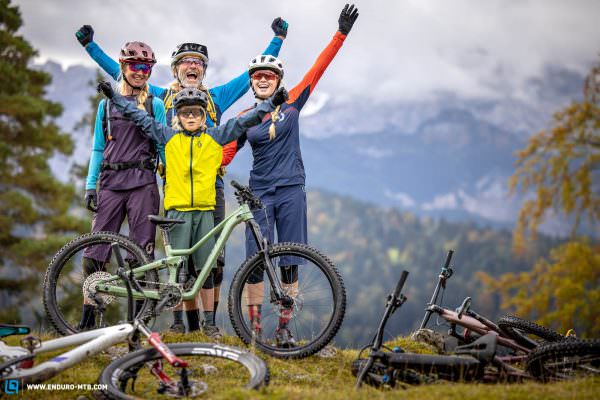
Photo: Daniel Geiger

Photo: Andreas Putz
Is mountain biking losing its originality?
Commercializing an extreme sport and the subsequent domestication for mass appeal means change is inevitable to some extent. This is where conflict can occur: some riders may get agitated as they’re overtaken by eMTBs and experienced riders may lack kinship for newbies painfully bumping their way down the mellowest, most manmade flow trails. If you consider it a dilution of mountain biking in its purest sense, it’s fairly comprehensible why there’s indignation in the air. But how many hardcore riders were also once new, a latecomers to the sport but now a fully-fledged vanlifer, improving their bike skills day by day?
“Yeah, yeah – ‘flow trails are boring. We’ve been organising the Singletrail Schnitzeljagd in the Bike Republic Sölden for the past 13 years, but we’ve heard the boring claim more and more often in recent years. As a diehard mountain biker, I definitely feel most at home on technical, natural trails and I’ll agree that the Bike Republic has massively changed recently. But it has had to! There are so many more riders these days and they need trails that are suited to their ability.. they’d be out of their depth with certain natural trails. Whereas everyone can have fun on well-built flow trails – advanced riders included! Isn’t it the sickest sensation when you take a cable car up over the mountainside with your bike in tow, then hurl yourself down the rollercoaster-like trail with a massive grin? Flow trails are an instant kick; they’re the premium version of an instant coffee.” – Holger Meyer, dad, bike coach, Schnitzeljagd event organiser
The motivation to run on treadmills is unfathomable to us but there are surely reasons behind this choice. And it’s the same with all sports, so judging someone’s decision as right or wrong, good or bad, is somewhat shortsighted.
Carbon or silicone – what remains of mountain biking’s origins?
What can we consider as the purest form of mountain biking in 2021? Touring the Alps with your €70,000 van? Churning up dust on your carbon fully with the latest FOX 38? Experiencing nature through the camera on your phone?
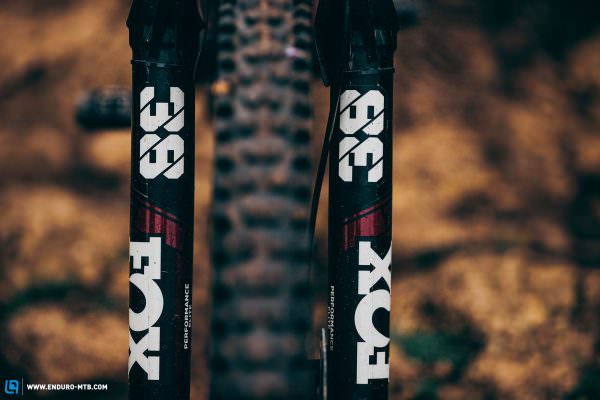

Purism doesn’t have to go as far as barefooted trail running—seriously, who wants thorns in the soles of their feet? But it’s worth thinking about the role of technology: how much do we need versus how much we are told we need. For some, carbon is causing the world to collapse; for others it’s the holy grail of bike technology. For some, silicone implants are the height of fakeness, vanity and superficiality, while others see them solely as an object of desire. The takeaway: the question of what’s art, culture, or sacrilege can’t be answered arbitrarily.
Who wants to cast the first stone of what’s authentic or acceptable? Will we accept people having a good time in Dubai’s ski hall? What about on the artificial waves in Crans-Montana, or on Sölden’s manicured flow trails? Aside from the obvious environmental concerns, who gets to decide how we participate in sports and get our kicks? Is there a clearly defined point on the scale of excess? And if we cross the line for one sport, what does it mean for the rest of our life? Do we only buy a new bike if the other one is truly trashed? No more Whistler trips? A ski hall in Dubai is an absurd thought for most people, considering the energy it consumes, but achieving prime snow in the desert is the same as sublime waves in the Alps. Demand determines supply, right? Money runs the world.
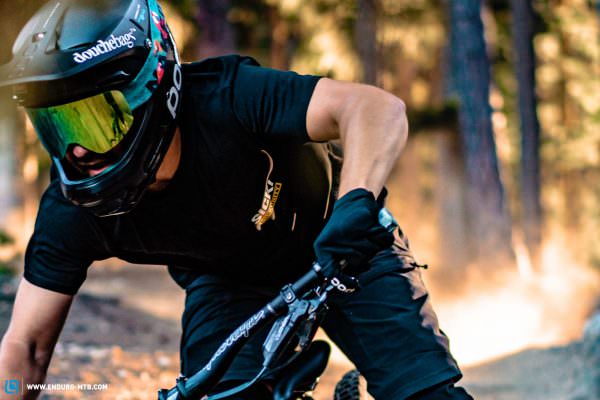
Photo: Markus Trattner

Photo: Andreas Putz
Sure, it’s debatable whether we need carbon or silicone in our life. You can have new experiences without going against nature or having invasive surgery—both of which tend to involve massive environmental and technological costs. Instead of attempting to copy-and-paste what already exists in an unnatural habitat, why not create something original that’s more in tune with the landscape? To do this, you need the right amount of innovation, creativity, pragmatism and the courage to go off-piste. The best example would be Dubai: why don your thermals in the middle of the desert when you could switch your snowboard for a sandboarding session on those massive dunes? Purists know that the best things in life are free. If you want something enough, you could build up a small sandboarding zone, complete with après-board chalets and pick-up trucks for shuttling. True originality!
“Three years ago I fell in love with riding on the Wexl Trail, at the Erlebnisarena in St Corona am Wchsel in Austria. The flow trail was the mellowest, perfect introduction for a newbie like me, and was just as much fun for as it is for an elite downhiller. Without that opportunity to ride the flow trail then, I certainly wouldn’t be riding daily like I do now – and probably even more often when I get an e-bike!” – Andreas Putz, Austrian skier and photographer

Die große Angst: „Die machen unseren Sport kaputt!?!“
Biking riding is booming with popularity levels rising amongst the wider public, but precisely because of the sheer volume of riders today, the eyes and ears of local politicians and forest authorities are on us. Ergo, one of the biggest tasks of the 2021 season—alongside ensuring trail access and upkeep—will be keeping the community in check. The bike industry isn’t the only entity that needs to deal with the growth and look at long-term sustainability of the boom—we, as the bike scene, need to adopt a sustainable way for mountain biking to scale up. In the best-case scenario, this will see cooperation with landowners and local councils. As the scene grows so does the responsibility for everyone involved.
The powder-hunting, Patagonia-clad backcountry skier isn’t the same individual as the apres-ski party animal, the one with Gucci sunnies bawling out lyrics to trashy Europop. Or, at least, not at first sight. No two skiers are the same, nor are snowboarders, nor mountain bikers. How many super-stoked female riders that are first to put their hand up for a bike park day? How many riders have you seen on the trails with the slickest, big-ticket carbon rig that then proceed to bump their way down a flow trail like it’s their first time? We all ride with our own style—that’s cool, let it be. Kinship and empathy need to be centrestage. There should be no room for conflict when everyone wants the same thing. People say that one’s worst enemy is oneself, so for the proud mountain biker—whose sport is now truly mainstream—your sense of identity gets diluted. To those purists out there who’ve ridden mountain bikes since the beginning and witnessed the emergence of the scene, this new mass participation format could seem threatening.
- ‘I’ve been riding for longer than you, so F—off.
- ‘All the gear, no idea – learn to ride before coming and sh*tting your pants on this trail!“
- ‘All these riders are ruining the trails!’ as you push down on your pedals.
Whether it’s between riders, riders and hikers, riders and dog-walkers, riders and horse-riders, trails are never totally free of conflict. It’s not because either party has a particular issue with what the other is doing; it’s just that in the absence of rules, acceptance, understanding and basic lack of space, one party may sometimes forget that they don’t actually despise the other party. Individuals of either party can turn an opportunity for communication into confrontation. When you’re so stuck in your own prejudgements and terrified of losing grip of your holy space, the ability to show mutual respect can become a little hazy. But if we all took a step back and cleared our vision, we’d realise that we—horse-rider, surfer, Gucci-clad party animal, or normcore backcountry skier—all want the same thing.

Surf or turf-war? When extreme athletes go to the extreme
Every day we get to decide how our local bike scene looks. You make it what it is. Enrich it or destroy it. Surfing is one of the coolest sports on the planet, but let’s not make the mistakes as they do: You enter the waves in a popular surf sport knowing you’ll be sharing the water with some first-rate idiots who fight for every wave that comes your way, show disdain for out-of-towners and rarely share a wave out of generosity. The way surfers (often literally!) fight for their territory can be arrogant, intolerant and protectionist. Of course, it’s not the stuff you see in heroic surf films and sleek branding, but that doesn’t mean it’s not the case. Most people realise that the souped-up Hollywood image of Baywatch’s Kelly Slater aka Jimmy Slade or the Instagram-filtered world of shaggy hair hippies isn’t the reality of the sport. But that doesn’t mean you’re able to imagine the extent to which hedonism, sexism and the glorification of violence feature in the world of surfing. Case in point: the Wolfpak in Hawaii, the Bra Boys in Australia.


Never forget: for as long as we live, we’ll always be beginners!
We’ve all been beginners at one point or another. Wetting your pants as a child. Bumping your way down a descent. And looking pretty rubbish as well. But you get over it. Those of us who want to live life to its fullest begin each day anew, ready for whatever or whoever we’ll encounter that day. For those living on autopilot, there’s a tendency to close the door to new experiences, repeatedly. The takeaway: let’s not turn our backs on each other, but turn to each other, listen and discuss.
“I see such huge potential for mountain bike destinations when it comes to attracting new guests. It requires a shift in focus to the mass market – children and families need aafe, fun, accessible infrastructure. The majority of riders want to focus on trail riding, which means that access to a lift isn’t an essential – it’s a bonus that gives you a gravity aspect, but newbies and families will be satisfied with descents of 100 to 200 metres of altitude drop. Regions like Norway’s Trysil Bike Area are succeeding in developing a whole new generation of riders by opening up the sport and providing an easy introduction for the masses. In Germany, Austria and Switzerland, this is an approach we should seriously be adopting!” – Normal Bielig, board member Tourismusforum Deutschland and Head of Concept at Desire Lines.
Instead of getting wound up by novices, start a dialogue, exchange perspectives and foster understanding. Don’t harden the front, soften it. It isn’t about convincing people by preaching. That will only be met with more resistance. Here’s some trail wisdom: if you’ve got nothing nice to say, don’t say anything at all.
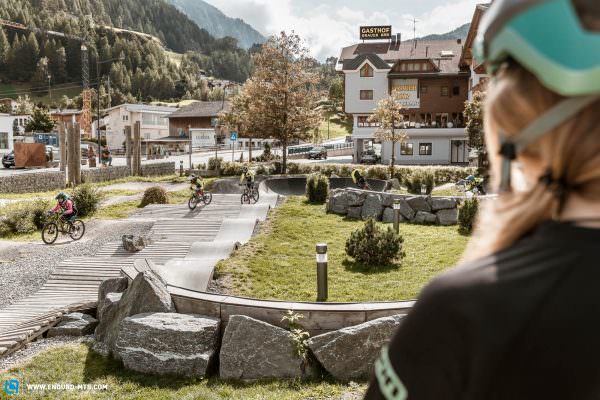

Let Whistler be the example – The opportunities for artificial adventure parks
If we want to avoid the mistakes of the surf scene, then mutual respect and understanding are a good place to begin. Follow it up by ensuring a safe space for all riders. Ski lessons are basically a must for new skiers, which is why manmade trail parks—trail centres, skills parks, flow trails and pump tracks—have their perks. Not only are they a lot of fun, they’re also a controlled environment for people to improve and push their limits. For kids, these sorts of spots are invaluable—find us a young kid that prefers to screen time to airtime and we’ll be surprised.
Whistler conjures up images of huge jumps, North Shore, and life-risking lines in grizzly bear territory. But really, there’s such a long list of trails that are so proficiently built that both novices and pros get just as much stoke here. Bike parks help to funnel the masses, giving them a safe space to ride. Sure, almost everyone dreams of heroic adventures, but for those who have a daily appointment at 8.30 am with work, they’re probably a bit reluctant to take the risk. As such, bike parks can be split into two camps — go extreme or go with the masses.
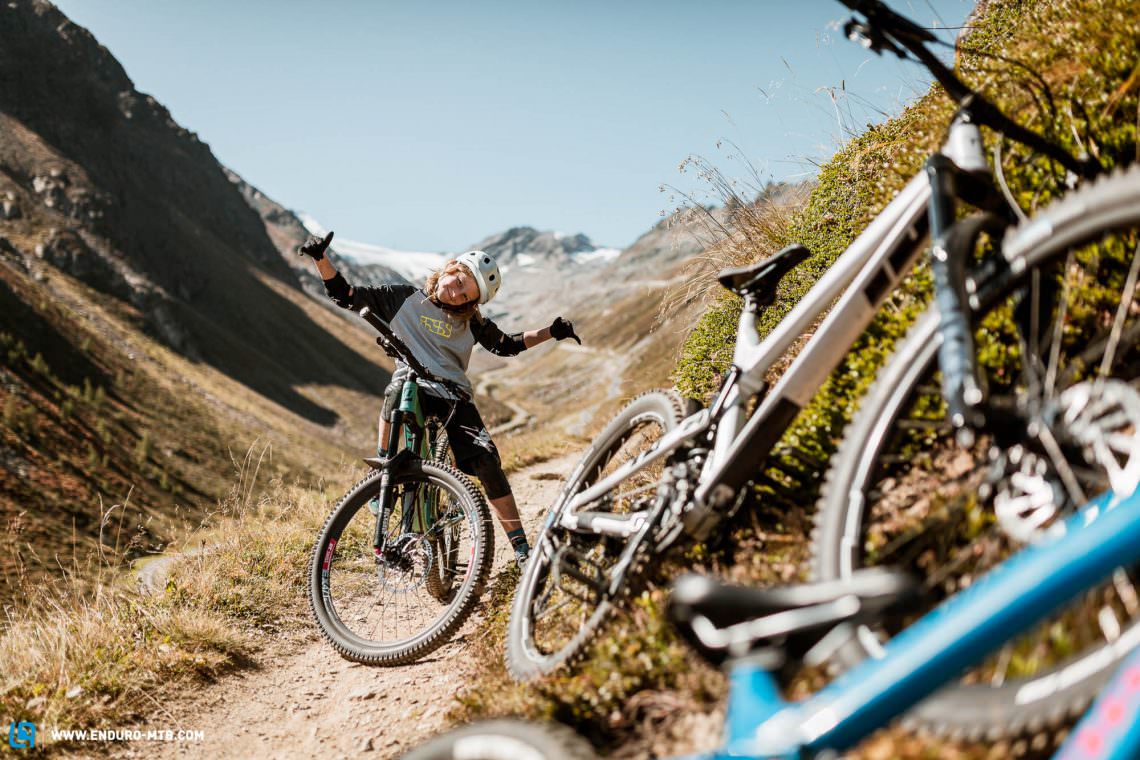
From tension to extension
In places where bike trails are legal and well-accepted, the community can grow and so too can the efforts of lobbying. The bike boom of recent years and the rapid growth in number of riders has spawned more than a few local and regional conflicts around the world—not just between various user groups of trails but also between riders themselves. We need a solution. For politicians and local authorities, that means a willingness to engage in dialogue and commitment to help create a solution. For the bike community, it’s even more important than ever to collaborate, form lobby groups, join existing clubs, and stand together for our interests.
And, to the hardcore MTB purists out there: you can prohibit use of your secret trails but as no one is likely to find them, it doesn’t really matter. Fortunately, not all extreme sports people can be domesticated. And that’s good—let the masses get funneled and we’ll just do our thing.
Conclusion
Growth means change and the bike boom demands a shift in how trails are organised and offered. The positives to all this: we’ve never had a more bountiful time to play on our bikes. Manmade trails and parks that cater for all levels should go ahead and funnel more riders with minimal risks. With the right amount of respect and kinship, we can all enrich the community — at the end it’s not about how or where you ride, but how you act and how much fun you’re having.

Did you enjoy this article? If so, we would be stoked if you decide to support us with a monthly contribution. By becoming a supporter of ENDURO, you will help secure a sustainable future for high-quality mountain bike journalism. Click here to learn more.
Words: Photos: Daniel Geiger, Christoph Bayer, Andreas Putz, Valentin Rühl, Robin Schmitt, Andreas Toepfer, Villach/Martin Hofmann, Ötztal Tourismus, CENTURION Bikes, Wavegarden Alaïa Bay









